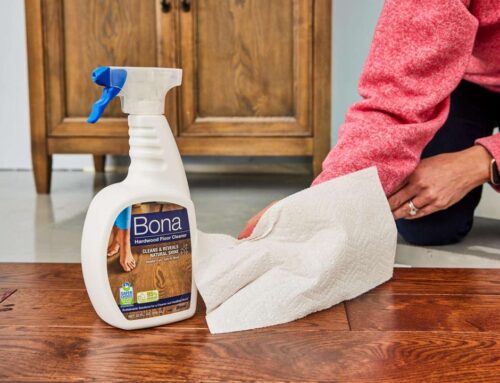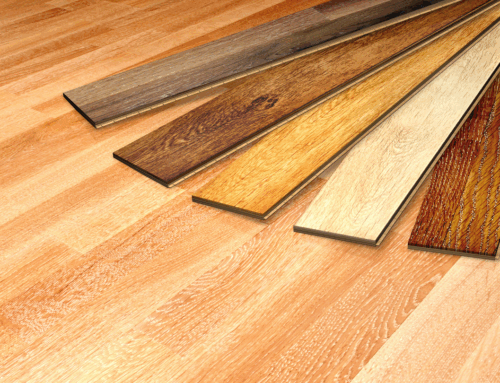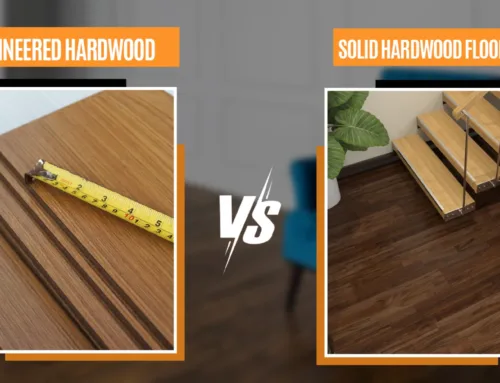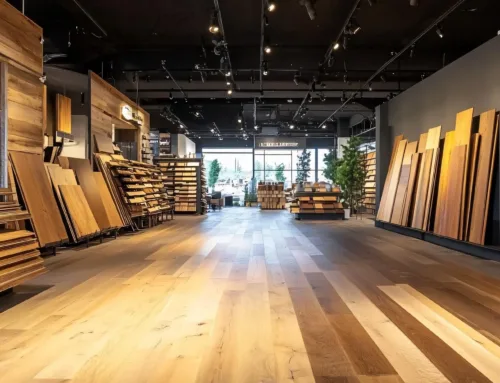[TL;DR]
“Dustless floor sanding uses specialized equipment with vacuum systems to capture 99% of dust particles during the sanding process. This method protects your health, reduces cleanup time, and creates a cleaner work environment. Key steps include proper preparation, using the right equipment with HEPA filters, and following a systematic grit progression. While dust-free sanding costs more upfront, it saves time on cleanup and provides better results than traditional methods.”
Sanding floors doesn’t have to turn your home into a dust-filled disaster zone. Traditional floor sanding creates clouds of fine particles that coat everything in your house, trigger respiratory issues, and require hours of cleanup. Dustless sanding technology has revolutionized floor refinishing by capturing up to 99% of dust at the source, keeping your home clean and your lungs healthy.
Professional dust-free sanding eliminates the mess while delivering superior results. Our certified technicians use advanced dust containment systems to protect your home during floor refinishing.
Learn More About Our Process: (678) 691-0533
What is Dustless Floor Sanding?
Dustless floor sanding is a floor refinishing technique that uses specialized equipment with built-in vacuum systems to capture dust particles as they’re created, preventing airborne contamination during the sanding process.
Dust-free sanding systems capture up to 99% of dust particles at the source, dramatically reducing airborne contamination compared to traditional methods. Research shows that HEPA filters trap at least 99.97% of all particles greater than 0.3 micrometers in diameter, making them essential components in effective dust containment systems.
How Dust Containment Systems Work
The technology combines three key components:
- Vacuum Integration: Powerful suction systems connect directly to sanders
- HEPA Filters: Remove particles as small as 0.3 microns from the air
- Sealed Collection: Dust gets trapped in disposable bags or canisters
Types of Floors Suitable for Dustless Sanding
Dust-free sanding works effectively on:
- Hardwood floors (oak, maple, cherry, pine)
- Engineered wood flooring
- Parquet and strip flooring
- Most solid wood surfaces over 3/4 inch thick
Preparing Your Space for Dustless Sanding
Proper preparation ensures maximum dust containment and protects your belongings from any residual particles.
Clearing and Protecting Furniture
Remove all furniture and fixtures from the room. For items that can’t be moved, cover them with plastic sheeting and seal edges with painter’s tape. This extra protection prevents the small amount of dust that might escape from settling on surfaces.
Sealing Gaps and Entry Points
Proper room sealing prevents dust from spreading throughout your home, even with advanced dustless equipment.
Use plastic sheeting and tape to seal:
- Doorways and windows
- Air vents and returns
- Electrical outlets and switch plates
- Gaps around baseboards
Safety Precautions
Wear protective equipment even with dustless systems:
- N95 or P100 respirator masks
- Safety goggles
- Hearing protection
- Work clothes you can discard
Choosing the Right Equipment for Dustless Sanding
The effectiveness of dust-free sanding depends entirely on having the right equipment setup.
Types of Dustless Sanders
- Orbital Sanders: Best for final finishing passes and delicate work.
- Drum Sanders: Ideal for removing old finishes and heavy material.
- Edge Sanders: Handle corners and tight spaces where larger machines can’t reach.
Vacuum Requirements
Your vacuum system needs specific features:
- Minimum 12-amp motor for adequate suction
- HEPA filtration rated for fine particles
- Large capacity bags or canisters
- Variable speed control to match the sander’s output
Pro-Tip: Start with a smaller orbital sander to test your dust collection setup before moving to more aggressive drum sanders.
Step-by-Step Dustless Sanding Process
Follow this systematic approach for professional-quality results without the mess.
Starting with Coarse Grit (36-60 Grit)
Begin with coarse sandpaper to remove the old finish and level the floor. Connect your sander to the vacuum system and check the suction before starting. Work in overlapping passes, moving with the wood grain at a steady pace.
Vacuuming Between Passes
Stop every 15-20 minutes to empty dust collection bags and check filter condition. Clean filters maintain maximum suction power and prevent dust from escaping back into the room.
Progressing Through Medium Grit (80-100 Grit)
Switch to medium grit sandpaper for the second pass. This step removes scratches from coarse sanding and begins creating the smooth surface needed for finishing.
Fine Grit Final Pass (120-150 Grit)
The final sanding pass uses fine-grit paper to create a smooth, ready-to-finish surface. Take your time during this stage, as it determines the final appearance of your floor.
Skip the preparation hassle and let our team handle everything from furniture protection to final cleanup. Rustic Wood Floor Supply brings professional-grade equipment and expertise to ensure flawless results.
Get Your Free Estimate: (678) 691-0533
Edge Sanding with Dust Containment
Use edge sanders with dust ports to reach areas the main sander can’t access. These smaller machines require the same vacuum connection to maintain dust control in tight spaces.
Final Cleanup and Inspection
After sanding, vacuum the entire floor with a clean filter. Use a tack cloth to remove any remaining particles before applying the finish. Inspect the surface under bright light to ensure even sanding throughout.
Tips for Achieving Best Results
Success with dust-free sanding comes from attention to detail and proper technique.
Maintaining Even Pressure and Grain Direction
Keep steady, consistent pressure on the sander. Too much pressure creates gouges, while too little leaves finish and scratches. Always move with the wood grain, never against it.
Filter and Bag Maintenance
Clean filters maintain optimal suction power, while clogged filters significantly reduce dust collection efficiency.
Check and replace filters every 2-3 hours of use. Empty dust bags when they’re 75% full to maintain optimal suction power. The baghouse dust collector dominated the global industrial dust collector market and held the highest revenue share of 25.8% in 2024.
Inspecting Between Passes
Stop periodically to check your progress. Look for:
- Missed spots with old finish
- Uneven sanding patterns
- Scratches from previous grits
- Areas needing extra attention
Final Buffing and Polishing
Use a soft buffing pad or hand sand with 220-grit paper for the smoothest possible finish. This final step removes any minor imperfections and creates the perfect surface for stain or clear coat.
Benefits of Dustless Sanding Over Traditional Methods
| Aspect | Dustless Sanding | Traditional Sanding |
| Dust Control | Captures up to 99% of dust | Creates large dust clouds |
| Health Impact | Safer for respiratory health | Risk of irritation and illness |
| Cleanup Time | Significantly reduced | Time-consuming and extensive |
| Finish Quality | Smoother, more precise sanding | Dust can interfere with the finish |
| Work Environment | Clean, visible workspace | Dusty, poor visibility |
| Equipment Cost | Higher initial investment | Lower equipment costs |
Pro-Tip: Professional dustless sanders require specialized equipment and expertise. Many contractors offer equipment that delivers superior results compared to consumer-grade options.
When to Hire Professionals vs. DIY
Dustless sanding requires specialized equipment and expertise that many homeowners don’t possess.
Equipment Costs and Complexity
Professional dustless sanders require significant investment, making rental the typical option for DIY projects. The wood floor grinding machine market is forecasted to rise from 1.2 billion in 2024 to 2.0 billion by 2033. However, improper use can damage floors and reduce dust collection efficiency.
Situations Requiring Professional Expertise
Hire professionals for:
- Large rooms over 300 square feet
- Antique or valuable hardwood floors
- Complex layouts with multiple rooms
- Floors with significant damage or cupping
- When you lack experience with power sanders
Finding Reputable Services
Look for contractors who:
- Specializing in dust-free sanding techniques
- Provide references from recent projects
- Carry proper insurance and licensing
- Offer written warranties on their work
- Use professional-grade equipment
Our certified technicians deliver flawless results while keeping your home clean and comfortable throughout the process. Years of experience with dustless technology guarantee professional outcomes.
Schedule Your Consultation: (678) 691-0533
Takeaway
Dust-free sanding represents the future of floor refinishing, offering superior results with minimal disruption to your home and health. By capturing dust at the source, this technology eliminates the mess and health risks associated with traditional sanding methods. Whether you choose professional services or tackle the project yourself, dustless techniques deliver cleaner, safer, and more efficient floor refinishing.
The investment in dustless equipment and expertise pays dividends in time saved, health protected, and quality achieved. Your floors deserve the best treatment available, and dust-free sanding provides exactly that.
Rustic Wood Floor Supply brings old-world craftsmanship and cutting-edge technology together. Our dustless sanding specialists combine precision techniques with advanced dust containment systems to restore your floors to their original beauty. We don’t only sand floors, we revitalize homes with care and respect for your living space. Every project begins with a thorough consultation and ends with floors that exceed expectations.
Contact Rustic Wood Floor Supply today and see why discerning homeowners trust us with their most valuable investment.
Start Your Project Today: (678) 691-0533
Frequently Asked Questions
How can I sand floors without creating dust?
Use dust-free sanding machines with powerful vacuum systems that capture dust at the source. These specialized sanders connect to HEPA-filtered vacuums, preventing particles from becoming airborne and settling throughout your home.
What equipment do I need for dustless floor sanding?
You need a dustless floor sander with dust collection ports, a powerful vacuum with HEPA filtration, and proper dust collection bags. Professional-grade equipment works best for effective dust containment.
Is dust-free sanding completely dust-free?
Dust-free sanding captures up to 99% of dust particles but isn’t 100% dust-free. Some fine particles may escape, so room sealing and protective masks are still recommended for optimal results.
Can I do dustless sanding myself, or should I hire a professional?
DIY dust-free sanding is possible with proper equipment and preparation. However, professionals often achieve better results, especially for large areas or valuable floors requiring expertise.
How do I prepare my home for dustless floor sanding?
Clear furniture, seal doorways and vents with plastic sheeting, wear protective equipment like N95 masks and goggles, and ensure proper ventilation for the safest sanding environment.
What are the health benefits of dust-free sanding?
Dust-free sanding reduces airborne particles that irritate the eyes, nose, throat, and lungs. This protection improves indoor air quality and prevents respiratory issues during floor refinishing projects.
Author Profile
- I have worked in hardwood flooring for the last 8 years. Use to run a company of residential crews as well as a company with gym flooring. If you need floor installation or refinishing help, I should have an answer or at least get you in the right direction.
Latest entries
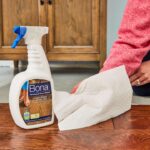 FlooringOctober 28, 2025DIY vs. Store-Bought Hardwood Cleaner Products Worth Trying
FlooringOctober 28, 2025DIY vs. Store-Bought Hardwood Cleaner Products Worth Trying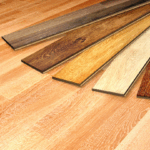 FlooringOctober 25, 2025Best Prefinished Hardwood Species for Durability and Style
FlooringOctober 25, 2025Best Prefinished Hardwood Species for Durability and Style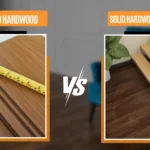 FlooringOctober 20, 2025Comparing Solid Hardwood vs. Engineered Hardwood Options In Store
FlooringOctober 20, 2025Comparing Solid Hardwood vs. Engineered Hardwood Options In Store FlooringOctober 19, 2025What to Check Before Buying Wholesale Flooring in Bulk?
FlooringOctober 19, 2025What to Check Before Buying Wholesale Flooring in Bulk?

